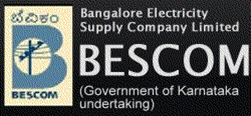Metro Rail too much to handle - Can we leapfrog...
thumb_up 457
Written By cvikash - 5 September, 2007
Traffic
Bangalore
Bangalore
Praja
Local Shuttles
Meeting
BTRAC
BTP
public transport
Enforcement
Metro Rail
Where as the need of a high capacity transit system for our cities is beyond any doubt,at a cost of Rs. 16000 crores for about 33 kms., as it stands on this day and further escalation anticipated, Bangalore Metro looks pretty expensive. Can Bangalore leapfrog into a next generation public transport system ? The answer today is a resounding "YES".
The new system called MetroLITE will in turn use a fleet of eco-friendly vehicles - 15-seater open minibus and auto-rickshaw running on electric or 4-stroke LPG, electric cars, electric scooters and lots of bicycles - parked at demand-responsive locations around the city. These will be used to service short trips and feeder trips to an advanced form of on-demand bus service and carpooling. Metro/mono rail will be used at the high density corridors "at grade", wherever required.
Together, it is estimated that at an average cost of Rs. 20 crores per kilometer for an estimated network of 600 kms., we can have a full-fledged transport system - that will offer personalised mobility services - for Rs. 12000 crores. Compare this with Metro Rail cost of Rs. 16,000 crores for 33 kms. A way to go...
Hi!
i. If you just look around, even in the most congested traffic, a large proportion of seats are empty. Amongst other factors, this is b'coz fuel, roads and air quality consumption is "perversely" subsidised in the country, abetted by a lack of application of basic technologies. You can find leads to why the state of affairs may be checked very soon, with the oil subsidy beginning to bleed the economy profusely and various other factors in combination, at www.mobilityxs.com/resources.htm .
ii. As an IT-intensive system, MetroLITE will involve at a later stage - dynamic route allocation based on vehicle probe data; similar to air traffic control, there will be a road traffic control which will issue "paths" to every vehicle on a seamless corridor of arterial roads - like a dedicated system - while retaining lots of flexibility.
Response
#1. "at grade" metro rail is only a last option. Most likely we will not need it. Buses can do the job for most of the corridors. On the very high density corridors, where metro rail is necessary will be the only carrier. A refurbished, access-controlled Mumbai suburban will be a good example in case, if we can overcome our prejudices against "desi" innovations. :)
#2. MetroLITE offers tremendous flexibility to adapt to multiple contexts. I would like to invite those who are interested to learn about and interact in greater detail for an offline meeting. We can organise on next Sat. 15th Sept. at a mutually convenient location.
Regards,
Vikash
First, I completely agree with the fuel subsidies point. The cost of using private transit is artificially low. And the cost of public transit is artificially high because of this. But it is difficult to ban this. Lots of small-scale commercial businesses meet their bottomlines only because of this.
Second, I am sold on the idea of organized quasi public transit. You are preaching to the choir there. Have you considered bearing in IT on existing auto system, perhaps as a first step? Easy Auto is trying it, but it is too small a setup to carry it off to its fullest potential that you describe.
That’s zonal connectivity. However, for interzonal connectivity, I am not convinced that the role of large capacity, right-of-way systems can be dismissed or let out to low capacity systems like buses and monos to carry. Primarily because as it is laid out BLR is a city with a lot of sprawl.
I am not hostile to BG rail systems, after all it is also a rail based system only wider. We have explored that in quite some detail here at praja and at silkboard’s website.
There is a solid chunk of network especially in the northern half of BLR that could act as force multiplier to metro. But it comes with its own set of limitations. Anyway you cut it, Majestic area comes out as a critical point in BLR transit, yet SBC is already thought of as being saturated, for example.
While it carries zillions and is the city’s lifeline, Mumbai’s commuter rail system is controlled by WR & CR, I am not sure if they have been as responsive as they should have been to Mumbai’s needs. From their experience, it is not clear if that system is scalable. How much they have expanded over the years, how much they have innovated, how many new services they have added, is not clear. Mumbai itself has gone the metro route for expansion.
BG system automatically brings in IR and the entire bureaucracy baggage of Rail Bhavan, Dilli.
The principal costs are not technological but land costs, primarily because neither old areas nor the new ones are marked for public utilities.
Land acquisition also increases with at grade rail systems, you need all the space for two tracks, median and shoulder buffers.
Plus, all the problems of squatters, intrusions, accidents etc…
it will be great if you can lay out a map or a graphic of how your network would look, it will help.
Please don't mind my queries, since I cannot attend your symposium, I am trying to understand your system through queries.
Once you explore the potential of a. localizing various trips, which can also be slow-moving and cross high-speed corridors through light road-over bridge infrastructure, trip chaining where required b. use light, low powered, eco-friendly vehicles (4-stroke LPG and electric auto-rickshaw and 12-seater, low floor, open mini-bus with detachable rain covers) as feeders to fill up an advanced, attractive, transaction-oriented carpooling and on-demand bus c. space the stops/pick-up points to 2kms. and optimise the number of entry and exit points on high-speed corridors and a combination of other factors - such as in-vehicle speed guidance to negotiate signals at green light and turn-by-turn route navigation, you can get speeds of 60 kmph. This means that you can carry 30K people on a 4-lane corridor. You can gradually phase out high footprint/seat vehicles by leaner, highly space efficient as well as energy-efficient (hybrid electric, PHEV, fuel cell etc.) vehicles. You also require fewer drivers which you can screen and incentivise using a Driver Proficiency Rating mechanism to get even better traffic flow conditions.
Compared to speeds of 8-10kmph, present occupancy levels and vehicle-driver mix, this is more than 20X improvement. The moral of the story is that for a city like Bangalore as for most cities, a metro rail like monolithic transit systems sit like a 800-pound gorillas, where as the cities need more nimble footed and adaptible beauties.
Regards,
CV
I am now reading your paper, it will take me time to review it. meanwhile here is a question:
as i understand you are trying to optimize on energy metrics, reuse (i got a feeling your are talking about creating a community shared transport system) and attempting to mimic the advantages of private vehicles through a "public" system.
but what do you think of congestion itself? i think of all the variables in this problem, congestion is the most difficult to optimize. at the same time solutions to address it are also difficult to scale. which means some levels of capacity redundancy is unavoidable.
i also have some qs on your planning systems but about it later.
btw, what is a creative way to address congestion due to transit? :) (problem solving vs creating-a subtle and healthy distinction)
Hi Vikash,
Quazi public vehicles' network. Interesting! I too think autos are a great business and make great sense as a transit option, but they are poorly organized to
realize their true potential.
WRT to your idea i have a few questions...
#1. without right of way, if metro has to compete with peds and traffic, it is just an expensive tram, which no city with bangalore's profile uses.
how can at grade metro work?
#2. for some reason, city planning is strangely poor/absent in BLR. Take whitefield for example, the internal road network is extremely poor. Village roads have been asphalted and converted to urban roads. they have allowed really dense development by permitting all sorts of commercial, industrial and residential complexes to come up, yet the roads are narrow and ped facilities non existent. Transit infrastructure is not sufficient to handle even this internal movement, forget added congestion due to people coming in from other parts of the city. similar inconsistencies are found in other areas.
without addressing this, how does adding more quasi public vehicles to the already high number of private vehicles help?
lack of planning and sprawl means transit is not only crucial but also a pressure point. one way or the other, the city will have to spend lots of money now to address this problem.
PRAJA.IN COMMENT GUIDELINES
Posting Guidelines apply for comments as well. No foul language, hate mongering or personal attacks. If criticizing third person or an authority, you must be fact based, as constructive as possible, and use gentle words. Avoid going off-topic no matter how nice your comment is. Moderators reserve the right to either edit or simply delete comments that don't meet these guidelines. If you are nice enough to realize you violated the guidelines, please save Moderators some time by editing and fixing yourself. Thanks!










